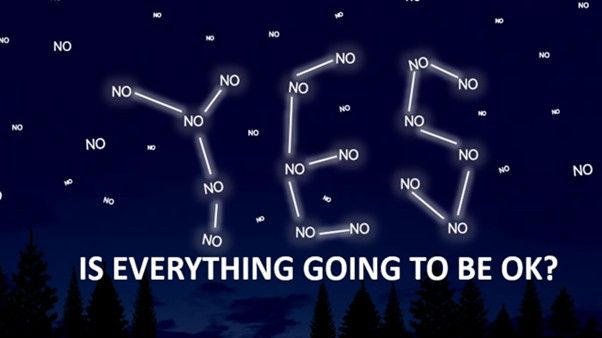Where now for US Sanctions Policy in Trump 2.0?
The outlook for U.S. sanctions under President Trump’s second administration suggests a shift toward strategic selectivity, with intensified pressure on Russia and Iran in pursuit of policy goals, partial relief for Syria, and growing divergence from EU and UK approaches – no doubt capable of swift reversal according to foreign policy goal achievement. Signals from administration officials point to a preference for tariffs and secondary sanctions over blanket embargoes.
U.S. Sanctions Outlook Under Trump 2.0: Strategic Pressure, Selective Enforcement
As of late 2025, the United States maintains one of the most expansive sanctions regimes in the world, targeting over two dozen countries and thousands of individuals and entities. The Office of Foreign Assets Control (OFAC) continues to enforce restrictions based on national security, foreign policy, and human rights concerns. Under President Trump’s second term, the sanctions landscape is evolving—marked by intensified pressure on adversaries, recalibrated enforcement, and a growing divergence from allied approaches.
Current State of U.S. Sanctions
Russia still remains the primary target of U.S. sanctions, particularly in response to its ongoing war in Ukraine. In October 2025, the Trump administration imposed sweeping sanctions on Rosneft and Lukoil, Russia’s two largest oil producers, blocking their assets and threatening secondary sanctions against foreign financial institutions that facilitate transactions with them. These measures aim to choke off energy revenues that fund Moscow’s war machine, aligning the U.S. more closely with recent EU and UK actions, although they are heavily linked to the administration’s aim to secure an end to the Ukraine war and may be reversed if it is deemed to contribute to that policy goal.
Iran continues to face comprehensive sanctions, especially under President Trump’s revived “maximum pressure” campaign. Executive orders issued in February 2025 expanded restrictions on Iran’s financial sector, ballistic missile program, and support for terrorist groups. The administration has also floated “Know Your Customer’s Customer” (KYCC) obligations, which would extend compliance burdens to entities indirectly linked to sanctioned Iranian actors.
Syria has seen partial sanctions relief, with the U.S. issuing a General License in mid-2025 to support humanitarian and reconstruction efforts following regime change. While core security-related sanctions remain, economic prohibitions have been eased in coordination with similar moves by the EU, UK, and Canada.
Other countries under U.S. sanctions include North Korea, Cuba, Venezuela, Belarus, Myanmar, and Sudan, with varying degrees of restriction. The U.S. also maintains targeted sanctions on entities in China, Turkey, and the UAE for facilitating Russian oil exports or engaging in military-industrial trade.
International Context: EU, UK, and UN Sanctions
The European Union has imposed 19 packages of sanctions on Russia, including bans on liquefied natural gas, shadow fleet tankers, and high-performance computing services. The UK has similarly targeted Russian energy firms and third-party enablers in India and China. The United Nations, while more restrained, continues to enforce arms embargoes and travel bans on countries like North Korea, Iran, and Syria.
Despite shared objectives, sanctions coordination is fraying. The EU and UK have tightened restrictions on Russian energy and financial networks, while the U.S., despite the Rosneft and Lukoil sanctions referred to above, has hesitated to join recent efforts to lower the oil price cap or expand asset freezes.
Changes Under President Trump’s Second Term
President Trump’s return to office in January 2025 marked a shift in U.S. sanctions policy. While he has not rolled back existing sanctions, his administration has:
- Imposed new sanctions on Russia’s oil sector, targeting Rosneft and Lukoil for the first time in this term.
- Announced tariffs on Indian goods in response to continued Russian oil imports, perhaps signalling a shift toward secondary economic pressure.
- Paused plans for direct engagement with Putin, citing lack of progress on peace talks (although it must be assumed that this may change very quickly).
President Trump has also hinted at using sanctions “as little as possible”, preferring tariffs and investment screening as tools of economic diplomacy. This approach perhaps reflects concerns about the long-term impact of sanctions on the U.S. dollar’s global dominance and the rise of alternative payment systems among BRICS nations.
Signals and Outlook
Administration officials have sent mixed signals about future sanctions strategy:
- Treasury Secretary Scott Bessent has floated tariffs of up to 500% on Chinese goods linked to Russian oil purchases, suggesting a hardening stance on third-party enablers.
- Congressional leaders are pushing for Russia to be designated a State Sponsor of Terrorism, which would trigger sweeping new restrictions.
- President Trump has stated that further sanctions will depend on NATO allies halting Russian oil imports, indicating conditional escalation.
Looking ahead, the U.S. is likely to pursue targeted, time-bound sanctions designed to yield quick diplomatic results. The administration may expand secondary sanctions and tariffs while avoiding comprehensive embargoes. Coordination with allies may weaken, especially if the President prioritizes bilateral deals over multilateral enforcement.
Tim Parkman
24/10/25
Sources:
Sky News – Trump’s oil sanctions on Russia
Kyiv Post – US lawmakers push terrorism label for Russia
Sky News – Power of Russia sanctions lies in US financial system
Sanction Scanner – List of Sanctioned Countries 2025
DLA Piper – Sanctions Matrix June 2025
World Population Review – Embargoed Countries 2025
The Argus – EU sanctions on Russia
Business Matters – UK sanctions on Russian oil
Sky News – Everything to know about US sanctions on Russia
UK Parliament – Sanctions against Russia: What has changed in 2025?
European Commission – EU adopts new sanctions against Russia
Outlook India – Jaishankar and Rubio meet
S&P Global – US sanctions approach during Trump’s second term










